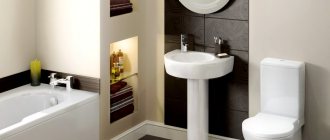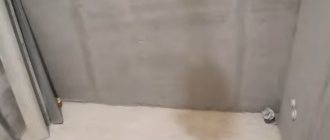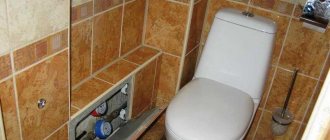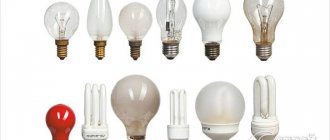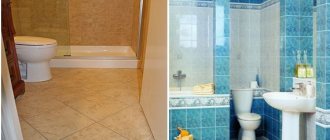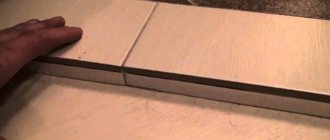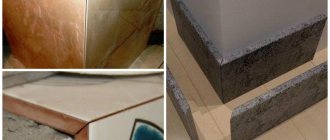Any part of a plumbing fixture such as a drain is an essential element of the shower design.
A shower floor drain is currently the most practical and quite popular solution when it is necessary to arrange an unhindered and efficient discharge of wastewater into the sewer system.
general information
A lot of time has passed since this invention . People understood about the positive and negative characteristics. Over all this time, a shower without a tray has undergone some changes, and now it can delight you with such functions as hydromassage, sauna, ozonation, radio and much more.
Today there are a huge number of varieties . Showers without a tray not only save space, but are also suitable for lovers of minimalism. There is nothing superfluous here, and the accents are placed correctly.
Several variations in form are now known. There are rectangular and corner baths. There are also types that are mounted into wall fencing. If we think about materials, these can be glass blocks, glass, polyethylene and much more. Most often, the material changes in the doors. The cabin is not equipped with a ceiling and floor.
It must be remembered that walking barefoot on a material such as ceramic tiles will be very difficult. Therefore, it is better to provide heating in advance . But it is also worth considering the main advantages and disadvantages before installation.
Methods and procedure for installing a drain
Depending on the purpose - a shower in the corner of the bathroom or emergency drainage from the entire floor area - there are differences in the installation of the device. They relate to the method of forming the necessary slopes. For a compact shower, a box is first made to serve as formwork. This makes it easier to ensure the desired shape of the floor surface in a small area of the shower so that the water drains quickly and does not splash out throughout the room.
A reputable manufacturer of drainage systems provides their product with detailed installation instructions. The general principles and procedure for installing a floor drain are as follows:
- Surface preparation: removal of old coating, filling of irregularities and cracks, priming.
- Coating waterproofing of the ceiling.
- Marking the location of drainage elements, discharge pipes and connections.
- Assembly of the drain on stops (without clamps and grate), installation of the connection to the riser.
- Heat and sound insulation made of polystyrene foam with a density of 35 kg/m3.
- Screed device.
- For a shower that occupies a small area of the bathroom, a waterproofing fiberglass canvas or rubber membrane is laid, extending 20 cm onto the wall.
- The coating is cut through at the drainage point, gluing the joints with mastic.
- Beacons are placed to form slopes. To do this, you can use special guides made of perforated metal-plastic profiles, which remain in the mass of the screed.
- Finishing with tiles or mosaics. The floor tiles must go under the wall cladding.
Pros of a shower without a tray
When it comes to the positive characteristics of such a device, they include the following:
- Minimum occupied space . With the help of such a cabin you can save space. You use it more rationally and provide a cabin of absolutely any size. If the bath is small, then this is one of the best ways to install it.
- Due to the fact that the walls of the shower stall are made transparent or translucent, the space is visually lighter . The design is made weightless, and the room will be brighter.
- Any designs can be realized . Most often, such booths are used for a minimalist style. That is why, if you follow fashion and keep up with the times, then this option will be the best fit for your option.
- Safe use . Very often, such a cabin is suitable specifically for the elderly, for children, as well as for the disabled. No need to go over the sides. You can easily get to the shower.
- An excellent option for tall people . Due to the fact that there is no ceiling in the shower, it will now become a salvation for tall people. They won't rest their heads.
- A small amount of time for installation and purchase of the necessary device . Very often, such corners are sold separately from shower trays. And therefore the choice is made faster.
- Convenient transportation and installation . Due to the fact that there is no pallet, a team of loaders will cope with the move faster and easier.
- Durability . Now there is no threat to floor tiles. The same cannot be said for acrylic, which is often used for trays or bathtubs.
As you can see, there are many advantages of such a component. But before buying, it’s better to also consider the shortcomings, which also exist, as in any other component.
Which material should you prefer?
Tile floor shower drains are made from plastic, stainless steel, cast iron and even glass. Plastic structures are lightweight, resistant to aggressive influences, easy to clean, and have a long service life, which is why they have earned popularity both among residents of private houses and apartments. Water drains through the gap in the floor between the shower tray and the grate, and also goes through the through holes at the top of the grate.
Plastic drains are equipped with removable or non-removable decorative grilles of various shapes and patterns. The height of the plastic product ranges from 75-180 mm. You can install such a shower drain in the floor under the tiles either by point method in an open area, or by angular or linear method near the wall. Since plastic is compatible with almost any floor covering, such products are often used for public showers (sports schools, gyms, baths, etc.).
All components of the plumbing shower drain, in addition to the grille and legs, are made of high-strength plastic. And the siphon in such products, as a rule, is made using the technology of floating balls with a dry valve. After the water flow passes through the siphon, the balls sink to its bottom, blocking the penetration of unpleasant odors from the sewer channel. However, this design slightly reduces the throughput of the device.
To reduce the cost of the product, the legs of some devices are made of perforated steel tape. And to give the ladder the required height, the tape itself is bent in certain places. In addition to the steel band, the product design can use adjustable screw feet.
Sewage drains made of stainless steel have proven themselves well. Moreover, not only the body of the product can be steel, but also the decorative removable grille. They are usually installed in bathrooms and restrooms with increased hygienic requirements - medical institutions, swimming pools, sanatoriums, children's camps, etc.
Linear drains made of stainless steel look especially beautiful. They are almost invisible in floors lined with ceramic tiles, natural or artificial stone. A modern solution for stainless steel drains is one of their forms, made in the form of the Latin letter “U”.
Sewage drains made of cast iron are installed in sanitary premises with harsh operating conditions - laundries, public showers and baths, specialized laboratories. For drainage of household and rainwater wastewater, exclusively cast iron vertical drains of DN 100 mm are used.
Cast iron devices have the highest throughput and are most resistant to corrosion, so their service life can reach 50 years. As a rule, these products are produced with a water seal.
Cons of a shower without a tray
When it comes to the negative characteristics of such structures as shower stalls without a tray, they include the following:
- Before installation, you need to carefully consider all preparatory processes . First of all, you need to immediately remember about the drain with a slight slope. If this is not done, the liquid will begin to stagnate. For arrangement, you will need to vary the level of flooring. In apartment buildings this can sometimes be very difficult to do.
- It is precisely because of the first drawback that the use of shower cabins is limited . It is almost impossible to do this in an apartment.
- Serious costs for the preparatory processes , because there will be a small redevelopment in the bathroom.
- Such a cabin usually has the simplest functionality . There will be no additional features in regular models. That is why if you want to add something, it will further increase the cost.
- If the pipe is clogged, water can stagnate in the cabin and spill throughout the room.
- You need to be careful about sealing , because when water spills, you can often flood your neighbors.
Overflow meaning
The overflow drain is designed for timely drainage of water. Often it comes complete with a siphon. But it can also be installed separately, as part of a sewer system.
For overflow, a special outlet is made from plastic or corrugation. Using adapters, the drain and overflow are connected to the main drain.
The traditional overflow has the simplest design. Among the advantages, it is worth noting the ease of installation. Also, the traditional version does the job perfectly. Disadvantages include a large number of components and an outdated appearance.
A variant of the drain model, which is equipped with a built-in check valve. This device prevents the reverse flow of water.
A semi-automatic drain consists of a control unit, a cable, a siphon and a valve plug.
Remember! When choosing, pay attention to the manufacturer. A poor-quality design can easily be touched and damaged when taking a shower if the plug is open. Therefore, the strength of the material is very important.
Automatic overflow after drain is similar to the traditional one. A distinctive feature is the shape of the plug with a spring.
When installing, pay attention to the tightness of the outlets before the drain is completely installed. The length of the overflow pipe is also important. If it is too long, then additional fasteners must be installed to avoid kinks.
Installation of a grill is mandatory. It performs preliminary filtration, trapping hair, debris, and soap particles. The grate will prevent clogging of the sewer. It is easier to clean the contents from the surface of the grate than to disassemble the entire structure.
How to ensure waterproofing?
The base must be clean, dry and without roughness on the surface.
The cracks are puttied, only then waterproofing is carried out. After priming, the surface is covered with mastic. Not so popular was bitumen mastic, which is usually covered with roofing material on top. This method is cheaper than others, but over the years the bathroom may gradually leak. Manufacturers offer a wide selection of waterproofing materials in dry and liquid form. It is recommended to apply mastic and glue the waterproofing membrane with overlapping material onto the wall. The overlap is 20 cm. If the waterproofing sheet has joints, they are treated with mastic and tape is applied. Builders advise taking a solid canvas.
Installation of cabin doors
This is the final stage of installation. It seems like a simple job that doesn't require any special equipment. The main task is to install the lower and upper rollers. Then they put seals on the doors and insert them into a special niche. With the help of adjustment, the best position is found when closing the doors.
Glass goes well with a variety of bathroom colors and styles
A properly installed shower stall without a tray on the floor will completely satisfy you in terms of practicality. Errors made during installation will cause problems and threaten the appearance of an unpleasant odor. Select high-quality components and follow the instructions when assembling.
